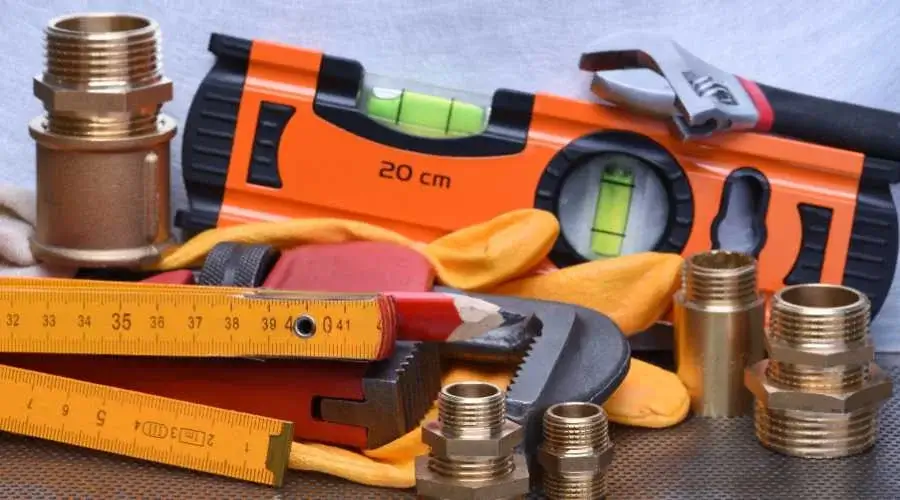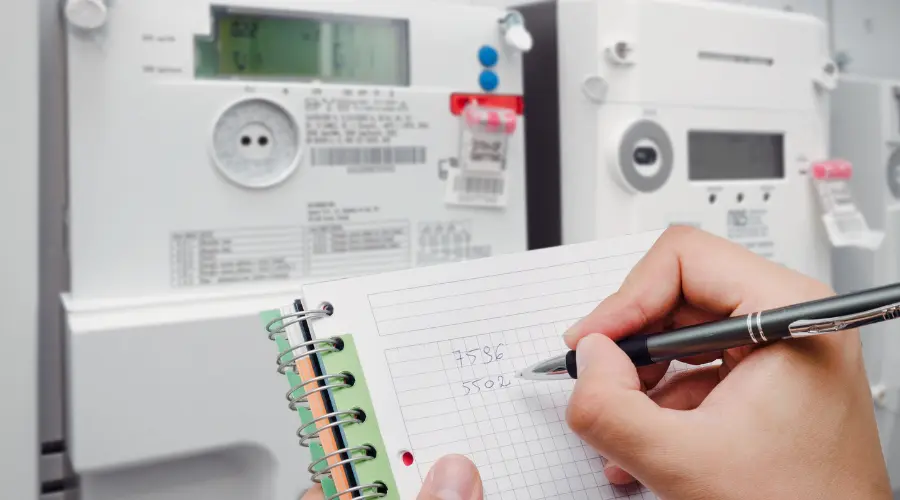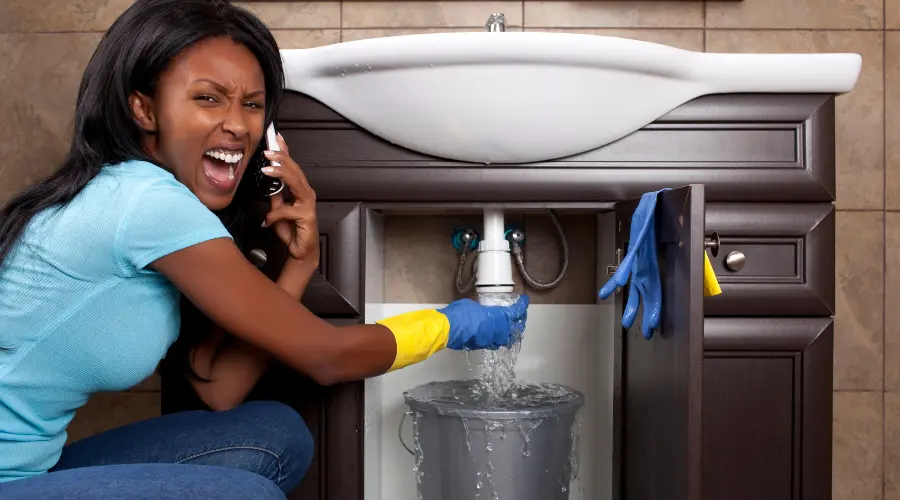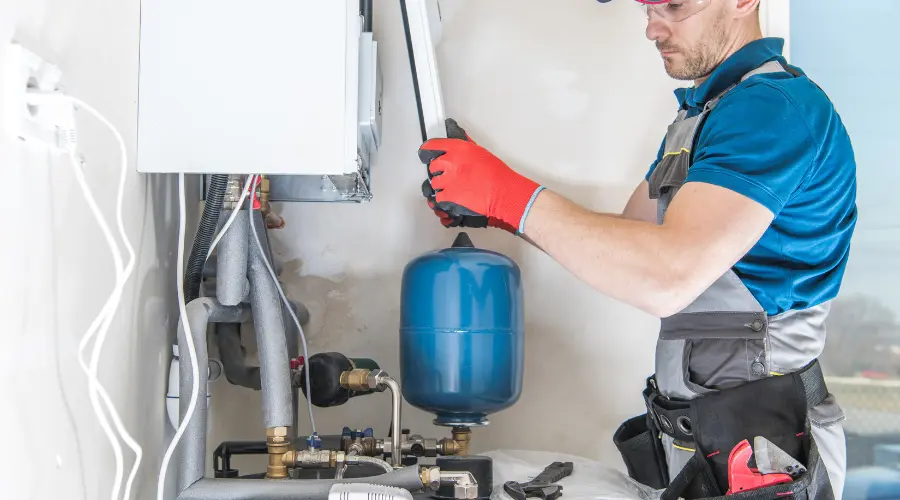Your plumbing system is the unsung hero of your home, delivering clean water and safely disposing of waste. A well-maintained system saves water, lowers utility bills, and reduces environmental impact. Implementing simple yet effective changes can enhance efficiency and prevent costly repairs. Here’s how you can optimize your plumbing system for better performance and sustainability.
Key Takeaways:
- Fix leaks promptly to prevent water waste and reduce utility bills.
- Upgrade to low-flow fixtures to conserve water and energy.
- Insulate exposed pipes to prevent freezing and enhance efficiency.
- Adopt water-saving habits to minimize consumption and costs.
- Regular plumbing maintenance extends system lifespan and prevents costly repairs.
1. Fix Leaks Promptly
Leaks may seem minor, but they can lead to significant water waste and expensive damage over time.
What to Look For
- Dripping faucets
- Pooling water under sinks or around pipes
- Unexplained water stains on ceilings or walls
- Silent toilet leaks (test by adding food coloring to the tank—if the color appears in the bowl without flushing, you have a leak)
Action Plan
- Replace damaged washers, seals, or connections immediately.
- Tighten loose fittings or replace corroded pipes.
- If you’re unsure about the extent of the damage, contact a professional plumber.
The Impact
According to the EPA, household leaks waste nearly one trillion gallons of water annually in the U.S. alone. Fixing leaks can save an average household up to 10% on their water bills.
2. Upgrade to Low-Flow Fixtures
Investing in water-efficient fixtures conserves water without sacrificing performance.
What Are Low-Flow Fixtures?
These include WaterSense-labeled faucets, showerheads, and toilets that use advanced technology to reduce water consumption. For example:
- Low-flow showerheads limit flow rates to 2.0 gallons per minute (gpm) or less, compared to traditional ones that use 2.5 gpm or more.
- High-efficiency toilets can save up to 13,000 gallons of water per year.
- Low-flow faucets use aerators to maintain strong water pressure while using less water.
Why Upgrade?
- Saves thousands of gallons of water annually.
- Reduces water bills and energy costs by lowering hot water usage.
- Requires minimal upfront investment with long-term savings.
Added Benefit
Low-flow fixtures decrease energy consumption by reducing the demand for heated water, making them an eco-friendly and cost-effective choice.
3. Insulate Exposed Pipes
Pipe insulation is a simple yet highly effective way to enhance plumbing efficiency and prevent costly repairs.
Why Insulate Pipes?
- Protects pipes from freezing and bursting in cold weather.
- Maintains water temperature, reducing energy loss.
- Prevents heat loss from hot water pipes, reducing the time needed to get hot water at the tap.
Best Materials for Pipe Insulation
- Foam pipe sleeves
- Fiberglass insulation
- Heat tape
Additional Advantages
- Hot water reaches your faucet faster, reducing water wastage.
- Insulation minimizes pipe sweating, which can lead to moisture-related issues like mold growth.
4. Practice Water-Saving Habits
Changing daily habits can lead to significant water conservation and cost savings.
Mind Your Usage
- Turn off taps while brushing your teeth or scrubbing dishes.
- Use a bucket to collect cold water while waiting for the shower to warm up, then use it for watering plants.
Efficient Appliance Use
- Run dishwashers and washing machines with full loads to maximize water efficiency.
- Choose ENERGY STAR-rated appliances that consume less water and energy.
Outdoor Conservation
- Water your lawn during early morning or late evening to minimize evaporation.
- Use rain barrels to collect water for irrigation.
Why It Matters
Simple behavioral changes can reduce household water consumption by up to 20%, lowering utility bills and benefiting the environment.
FAQs About Plumbing Systems
1. How often should I inspect my plumbing system?
It’s best to inspect your plumbing system every six months. Check for leaks, corrosion, and blockages. Additionally, schedule a professional inspection once a year for a comprehensive assessment.
2. What is the lifespan of plumbing fixtures?
- Faucets: 15-20 years
- Toilets: 50+ years with proper maintenance
- Pipes: Copper pipes last 50+ years, while PVC pipes typically last 25-40 years.
3. What are the signs of a hidden plumbing problem?
- Sudden spikes in water bills
- Mold or mildew growth
- Low water pressure
- Unexplained damp spots or puddles
4. Are low-flow fixtures expensive to install?
Low-flow fixtures may have a higher upfront cost, but they quickly pay for themselves through water and energy savings. Many are DIY-friendly, but professional installation is always an option.
5. How do I prevent frozen pipes in winter?
- Insulate all exposed pipes.
- Keep indoor temperatures above 55°F.
- Let faucets drip slightly in extreme cold to relieve pressure and prevent bursting.
6. Why is my water pressure low?
Low water pressure can result from:
- Clogged pipes
- Leaks
- Municipal water supply issues If pressure remains low, consult a professional plumber for diagnosis.
7. How can I reduce water heater energy usage?
- Lower the thermostat to 120°F.
- Insulate the water heater tank and pipes.
- Upgrade to a tankless or high-efficiency model for better performance and savings.
Trust CBJ Plumbers for Your Plumbing Needs
At CBJ Plumbers, we specialize in optimizing plumbing systems for better efficiency, lower costs, and enhanced comfort. Our expert team provides:
- Comprehensive leak detection and repair
- Installation of high-efficiency fixtures
- Pipe insulation for improved energy conservation
- Preventive care to ensure long-term functionality
Let CBJ Plumbers help you achieve a more efficient, eco-friendly plumbing system. Contact us today!




